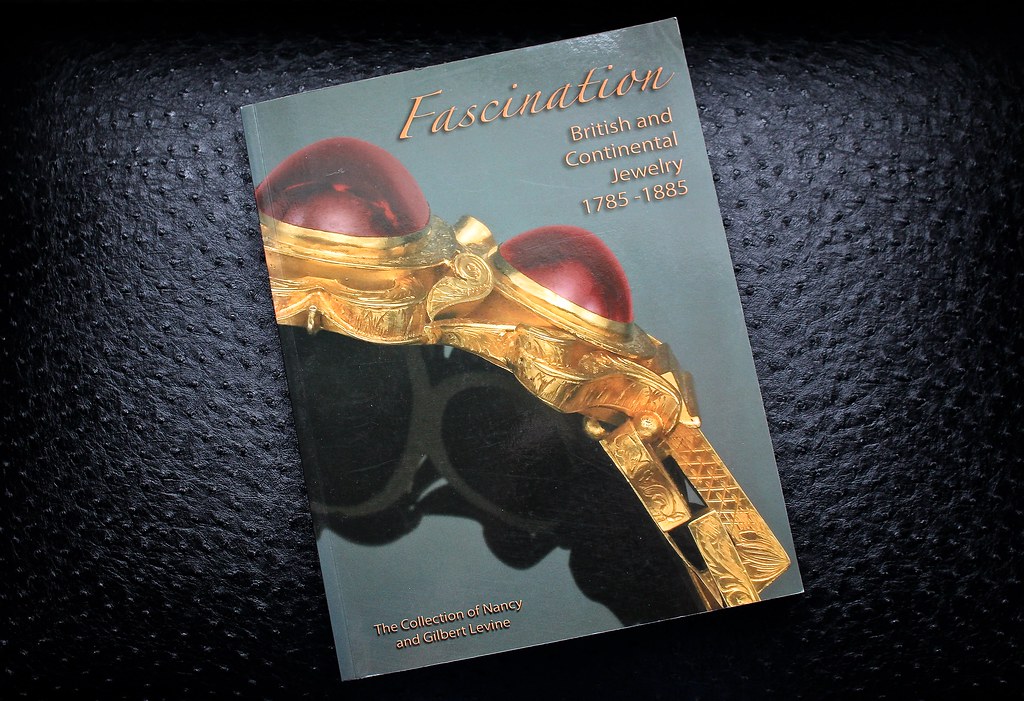
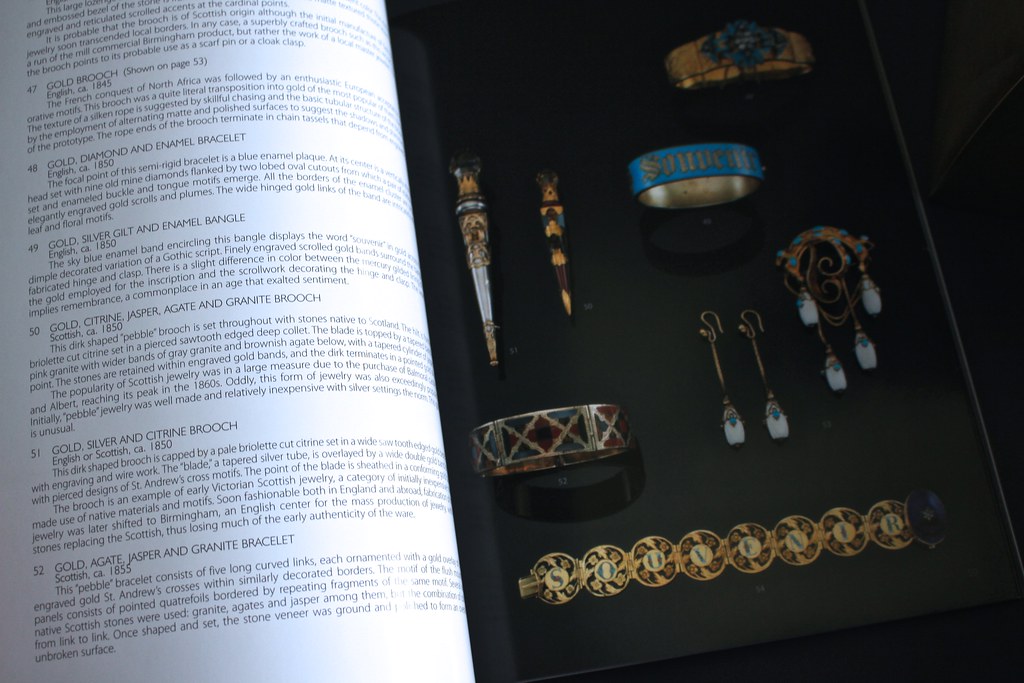

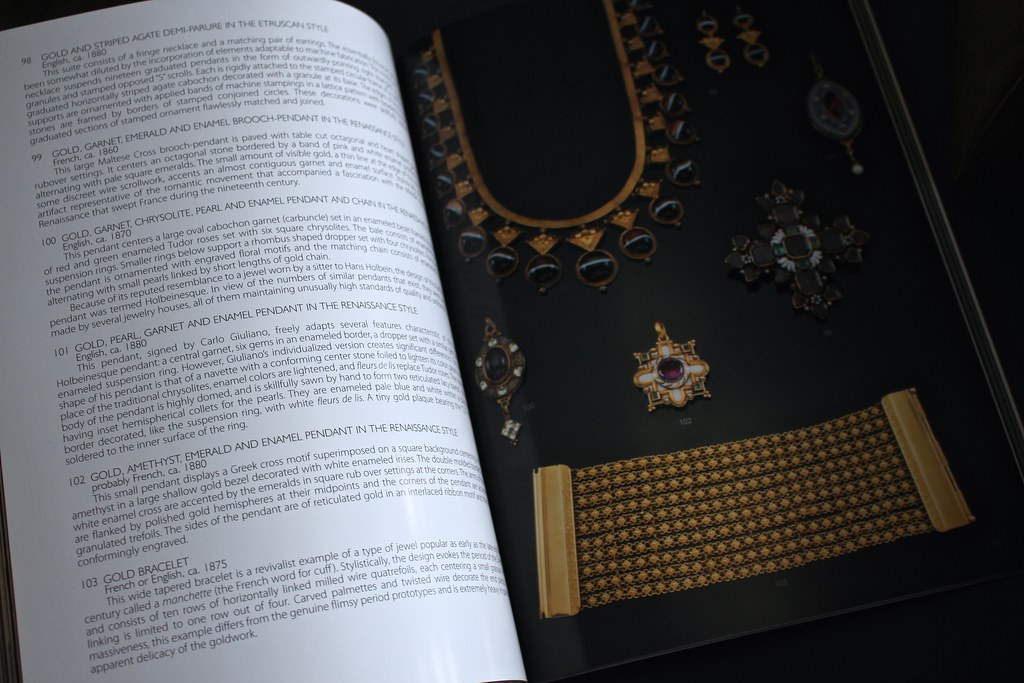
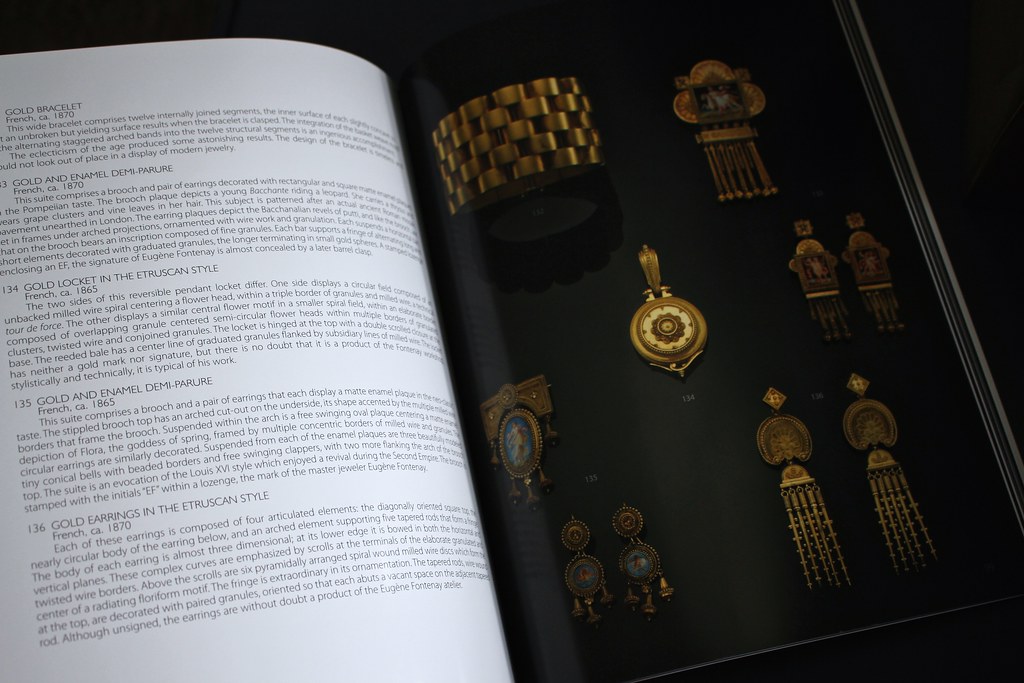
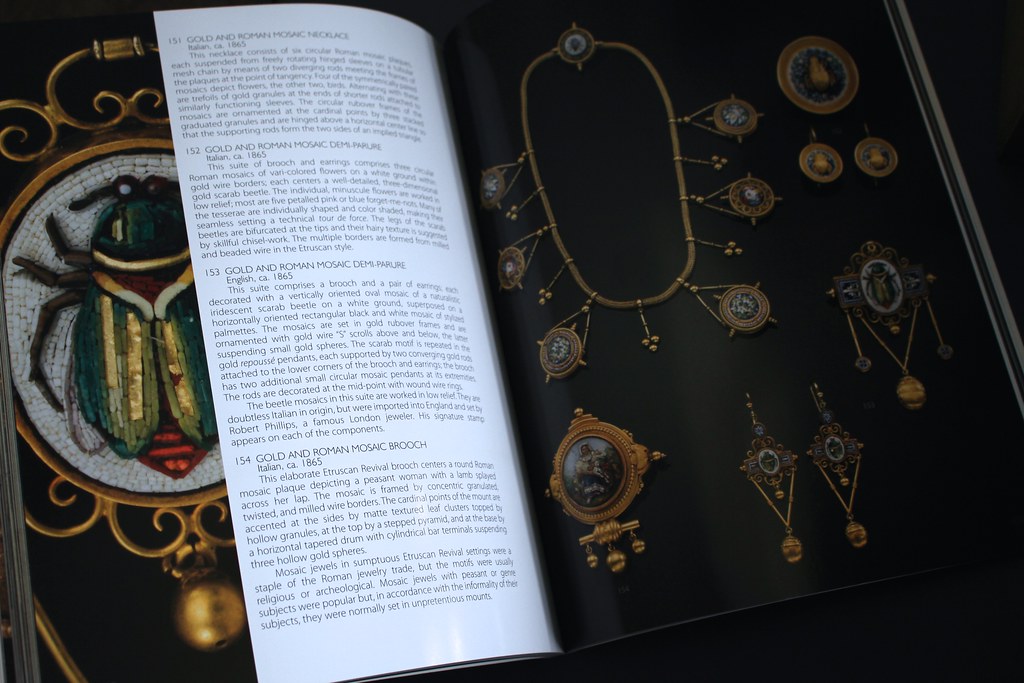
A book like Fascination: British and Continental Jewelry 1785-1885 The Collection of Nancy and Gilbert Levine is the type of jewelry book that I am constantly longing for–a glimpse into someone’s personal collection, featuring descriptions of each piece and hopefully a little insight into the collector’s mind. This is exactly what you get with this book and I am forever grateful! A special thanks to Lenore Dailey who recommended this book via Instagram–what a wonderful community we have as jewelry collectors!
As with most collections, it always starts with one piece and one beautiful story. For collectors Nancy Levine and the late Gilbert Levine, whose collection of over 200 pieces is chronicled here, it was an Assyrian bangle bracelet that started it all. The couple were on a trip in London during the 1960s and stumbled upon this piece in a shop window. It was then that they fell in love with the sheer beauty and craftsmanship of the time period, and an obsession was born. Since then, the collection has been graciously loaned to be featured in several museums across the United States, with the Museum of Arts and Sciences in Daytona Beach, Florida being a long-holding curator as well as the force behind this publication. It is very magical, as a collector, to hear the words used to describe Ms. Levine when she gushed over her pieces–pouring out historical information like an expert and with a spark in her eye. It is a feeling most collectors understand!
The book showcases the collection in beautiful, colored photographs with excellent descriptions of each piece which will both fascinate and educate any reader. I love Ms. Levine’s introduction titled, “On Collecting.” The book is divided into sections based on time period and themes, with a focus on jewelry from 1785-1885 only–a truly unique time period in both jewelry and history. Although this book doesn’t focus too much on the historical aspect, it does give a brief overview of what was going on during that period of 100 years before getting into the jewelry, which helps to understand the aspects of the jewelry more fully. The sections are broken down into Jewelry of the Gentry, Cannetille, William IV, The Bourbon Restoration, Early Victorian, Cameos, Revivalist, Late Victorian, Second Empire, Mosaics, Mourning, Souvenir, Evening Glitter, Religious Symbols, Earrings, and Jewelry of the Less Affluent.
I have to admit, this time period is one I know the least about, so reading this book really had my knowledge growing! I won’t give too much information away, other than it is a must-have for any antique jewelry collector! Here are just a few key points I learned from this amazing, chronicled collection:
- A couple seed-pearl demi-parures were featured in this book–I didn’t know that they were worn mostly by single women, as diamonds were worn mostly at night by married women.
- The invention of the Argand lamp during the 1780s had influenced jewelry gold finishes–the use of matte contrasted with polished gold–which was now made visible by these new lamps.
- Tassie cameos were invented by Scotsman James Tassie–they were sulphur-wax molds cast with a potash-lead paste, essentially paste cameos, made to satisfy the needs of the less affluent to collect exquisitely carved cameos held by the affluent.
- Revivalist jewelry is a term used to describe pieces of this time period where styles of the past–like Etruscan, Egyptian, etc–were becoming en vogue. This was due to many archaeological finds of the time, excavations taking place in Italy, Greece and the Middle East. Increased ability to travel also helped fuel this reawakening of jewelry style.
- There are two types of mosaics: Roman & Florentine (the picture above of the micro mosaics feature all Roman types.
To buy a copy for yourself: (I bought a used copy through Amazon and it was signed by the curator!)

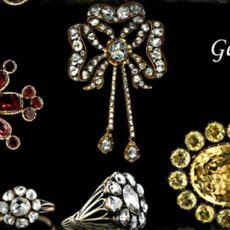
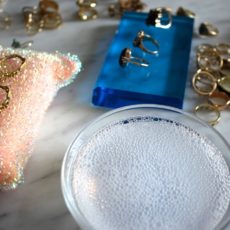
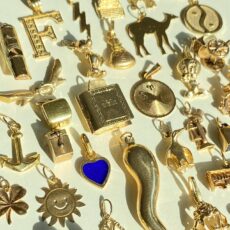
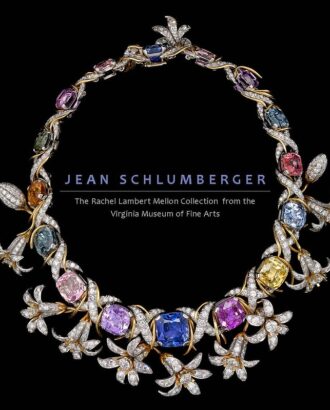

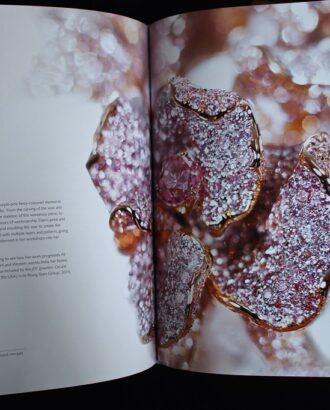
Erica April 24, 2015 at 3:16 pm:
Great book of jewelry, amazing pieces in here I hope there will be more like this.